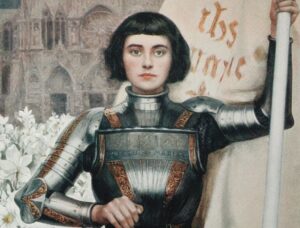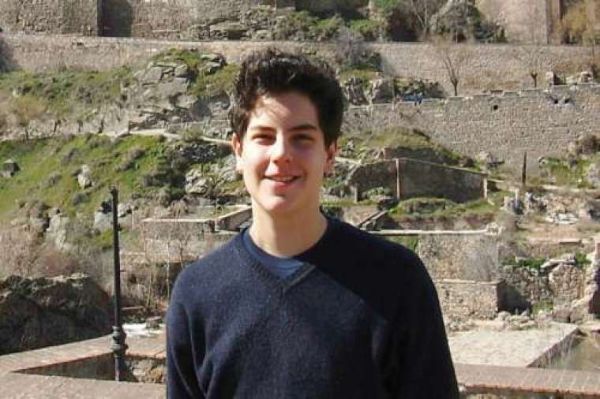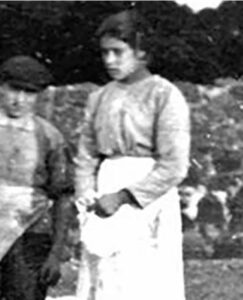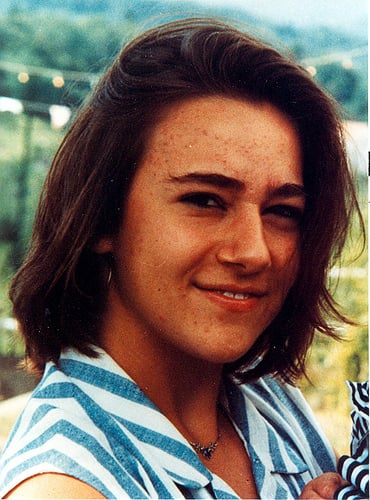The Scriptures were written, not to make us astronomers, but to make us saints.
The saints are like the stars. In his providence Christ conceals them in a hidden place that they may not shine before others when they might wish to do so. Yet they are always ready to exchange the quiet of contemplation for the works of mercy as soon as they perceive in their heart the invitation of Christ.
All Christians are called to be saints. Saints are persons in heaven (officially canonized or not), who lived heroically virtuous lives, offered their life for others, or were martyred for the faith, and who are worthy of imitation.
How Many Saints Are There?
The answer to that question can vary, depending on the definition of “saint.”
The word “saint” comes from the Latin word sanctus, meaning “holy.” During the first several centuries of the Church, this title was freely given to all those, primarily martyrs, who were publicly known for their holiness.
It wasn’t until 1588 that the Vatican’s Congregation for Saints’ Causes was officially created to help regulate this title and be more selective regarding the process of formal canonization.
Few people have had the time to sort through even these several centuries of saints and come up with a tally of officially canonized saints.
In general the range of answers to this question is between 1,000 and 8,000 saints. However, this may not include the vast number of saints that have been canonized in the past few decades.
For example, St. John Paul II canonized 482 saints, Pope Benedict XVI canonized 45 saints and Pope Francis has alone canonized 893 saints. These numbers are often high on account of “mass” canonizations, such as the canonization of 800 Italian martyrs by Pope Francis in 2013.
On the other hand, most people agree that the number of “saints” is impossible to calculate, as the term can also refer to all those people currently in Heaven.
Some people claim there have been at least 100 billion births since the beginning of human existence. How many of those people are in Heaven is a matter of speculation, and none of us will definitively know that until the end of our own lives on earth.
What does matter is that everyone is called to holiness and should strive to become a saint. Holiness is attainable to anyone who desires a close relationship with Jesus and can be achieved in any profession or vocation on earth.
Source
Holy Mary
Mary is called Queen of All Saints.
As the Mother of God, the Virgin Mary has a unique position among the saints, indeed, among all creatures.
Mary, also known as Queen Mary, St. Mary the Virgin, the Blessed Virgin Mary, Saint Mary, Mary Mother of God or the Virgin Mary is believed by many to be the greatest of all Christian saints. The Virgin Mother “was, after her Son, exalted by divine grace above all angels and men.”
Mary is venerated and out of the ordinary, called by St. Thomas Aquinas, hyperdulia, as the holiest of all creatures.
The main events of her life are celebrated as liturgical feasts of the universal Church.
Mary’s life and role in the history of salvation is foreshadowed in the Old Testament, while the events of her life are recorded in the New Testament. Traditionally, she was declared the daughter of Sts. Joachim and Anne. Born in Jerusalem, Mary was presented in the Temple and took a vow of virginity. Living in Nazareth, Mary was visited by the archangel Gabriel, who announced to her that she would become the Mother of Jesus, by the Holy Spirit.
She is, indeed, considered in Christian tradition as a super-saint.
Saint Joseph
St. Joseph was an extraordinary man, the holy head of the Holy Family.
While Jesus and Mary were both sinless, they both obeyed St. Joseph. St. Joseph faithfully followed God’s plan for his life. St. Joseph was an ordinary sort of man on whom God relied to do great things.
He did exactly what the Lord wanted him to do, in each and every event that went to make up his life.
He has a special place in heaven and a special place in the hearts of Jesus and Mary. He is also patron of the Universal Church and one of the most powerful intercessors among the saints.
St. Joseph loved Jesus St. Joseph loved Mary St. Joseph did the will of God
Saint John the Baptist
Saint John the Baptist is most known for being the cousin of Jesus and the principal figure to prepare the way for Christ before He began His public ministry. He is also known for being the son of Saints Elizabeth and Zechariah, who bore him in their old age
Saint Thomas
Saint Thomas is best known for his role in verifying the Resurrection of his Master. Thomas’ unwillingness to believe that the other Apostles had seen their risen Lord on the first Easter Sunday, earned him the title of “doubting Thomas.”
Saint Peter and Paul
Two great apostles Peter and Paul. Saint Peter, one of the Twelve and the chief of the Apostles, the Rock upon which Christ built His Church, and Saint Paul “called to be an apostle, set apart for the gospel of God” (Rom. 1:1) and Apostle to the Gentiles. Together they are honored as founders of the Church of Rome, having been separately martyred there during the reign of the Emperor Nero.
“Christian tradition has always considered Saint Peter and Saint Paul to be inseparable: indeed, together, they represent the whole Gospel of Christ.” (Pope Benedict XVI)
The Twelve Apostles
Peter, Andrew, James (son of Zebedee), John, Philip, Bartholomew, Thomas, Matthew, James (son of Alphaeus), Thaddeus, Simon (the Zealot), and Judas who betrayed Jesus -Matthias took his place.
Saints and soon to be Saints you might want to get to know better
Blessed Pier Giorgio Frassati
Age 24 – (1901-1925)
A Saint for the Modern World . Blessed Pier Giorgio Frassati is a saint for the modern world, and especially for young people. Born in 1901 in Turin, Italy, his time on earth was short—only 24 years—but he filled it passionately with holy living. Pier Giorgio was a model of virtue, a “man of the beatitudes,” as Pope John Paul II called him at his beatification ceremony in 1990. He was described by friends as “an explosion of joy.” As Pier Giorgio’s sister, Luciana, says in her biography of her brother, “He represented the finest in Christian youth: pure, happy, enthusiastic about everything that is good and beautiful.”
To our modern world which is often burdened by cynicism and angst, Pier Giorgio’s life offers a brilliant contrast, a life rich in meaning, purpose, and peace derived from faith in God. From the earliest age, and despite two unreligious parents who misunderstood and disapproved of his piety and intense interest in Catholicism, Pier Giorgio placed Christ first in all that he did. These parental misunderstandings, which were very painful to him, persisted until the day of his sudden death of polio. However, he bore this treatment patiently, silently, and with great love.
TEST
Saint Joan of Arc
Age ~19 – (c. 1412-1431)
 On January 6, 1412, Joan of Arc was born to pious parents of the French peasant class in the obscure village of Domremy, near the province of Lorraine. At a very early age, she was said to have heard the voices of St. Michael, St. Catherine, and St. Margaret.
On January 6, 1412, Joan of Arc was born to pious parents of the French peasant class in the obscure village of Domremy, near the province of Lorraine. At a very early age, she was said to have heard the voices of St. Michael, St. Catherine, and St. Margaret.
At first the messages were personal and general, but when she was 13-years-old, she was in her father’s garden and had visions of Saint Michael, Saint Catherine, and Saint Margaret, each of whom told her to drive the English from French territory. They also asked that she bring the Dauphin to Reims for his coronation.
After their messages were delivered and the saints departed, Joan cried, as “they were so beautiful.”
When she was sixteen-years-old, she asked her relative, Durand Lassois, to take her to Vaucouleurs, where she petitioned Robert de Baudricourt, the garrison commander, for permission to visit the French Royal Court in Chinon.
Despite Baudricourt’s sarcastic response to her request, Joan returned the following January and left with the support of two of Baudricourt’s soldiers: Jean de Metz and Bertrand de Poulengy.
Jean de Metz admitted Joan had confided in him, saying, “I must be at the King’s side … there will be no help if not from me. Although I would rather have remained spinning [wool] at my mother’s side … yet must I go and must I do this thing, for my Lord wills that I do so.”
More Information
TEST
Blessed Carlo Acutis
Age 15 – (1991-2006)
 Bl. Carlo Acutis lived a life of heroic holiness, despite only living to age 15. He loved to code and even built a website tracking Eucharistic miracles. Bl. Carlo is an example of how to live out holiness in the modern world.
Bl. Carlo Acutis lived a life of heroic holiness, despite only living to age 15. He loved to code and even built a website tracking Eucharistic miracles. Bl. Carlo is an example of how to live out holiness in the modern world.
Early Life
Bl. Carlo Acutis was born in London in 1991, before his family soon settled in Milan, Italy. He received his First Communion at the age of 7 and became a frequent communicant.
He made it a priority to visit Jesus in the tabernacle along with going to confession every week. His mother said:
“As a little boy, especially after his First Communion, he never missed his daily appointment with the Holy Mass and the Rosary, followed by a moment of Eucharistic adoration.”
In his own family, he was the one who helped convince his family to go to Mass more often.
At school, he defended other kids against bullies. When one of his friend’s parents were getting divorced, he made a special effort to include him in his own family life.
Along with his holiness, Bl. Carlo was a normal kid. He loved to hang out with friends, play video games (only one hour per week as a penance), and play soccer.
Leukemia Diagnosis
At the age of 15, he contracted leukemia. He chose to offer his suffering for Pope Benedict XVI and the Church.
When a doctor asked him about the pain, he responded: “There are people who suffer much more than me!”
In his last months, he chose to make a website to categorize every Eucharistic miracle in the Church, all 136 of them.
Bl. Carlo Acutis shows a path toward holiness in the modern world: a love for the Eucharist and a life for God: “To always be close to Jesus, that’s my life plan.”
St. Maria Goretti
Age 11 – (1890-1902)
 Born on October 16 1890 in Corinaldo, in the Ancona Province in Italy, her farmworker father moved his family to Ferrier di Conca, near Anzio. When he died of malaria, Maria’s mother had to struggle to feed her children.
Born on October 16 1890 in Corinaldo, in the Ancona Province in Italy, her farmworker father moved his family to Ferrier di Conca, near Anzio. When he died of malaria, Maria’s mother had to struggle to feed her children.
Maria’s mother, brothers, and sisters worked in the fields while she cooked, sewed, kept the house clean, and watched her youngest sister Teresa. Though the family’s circumstances were extremely difficult, they were very close and loved God.
On July 5, 1902, Maria was sitting outside the steps of her home sewing her 18-year-old brother or neighbor -it is unclear which – Alessandro’s shirt while he threshed beans in the barnyard. As she concentrated on her sewing, Alessandro surprised her and grabbed her from her steps. When he tried to rape her, Maria cried that it was a mortal sin and warned he would go to hell.
When Alessandro persisted, she fought him and screamed, “No! It is a sin! God does not want it!” At her words, Alessandro began to choke her and she said she would rather die than submit. Upon hearing her words, Alexander pulled out a knife and stabbed her eleven times. When she attempted to reach the door, he stabbed her three more times then fled.
Blessed Chiara Badano
Age 18 – (1971-1990)
 Blessed Chiara Luce Badano was a young Italian teenager who was beatified in 2010 by Pope Benedict XVI. She was chosen by the bishops as one of the patrons for the 2018 Synod on Youth.
Blessed Chiara Luce Badano was a young Italian teenager who was beatified in 2010 by Pope Benedict XVI. She was chosen by the bishops as one of the patrons for the 2018 Synod on Youth.
Chiara was born on October 29, 1971 in a small town in northern Italy, to Ruggero and Maria Teresa Badano, who had longed to have a child for many, many years.
Chiara was a loving and exuberant child, and, despite her headstrong and sometimes defiant temperament, had a close relationship with them.
When she was nine, Chiara attended her first meeting of the Focolare Movement. Focolare is a lay ecclesial movement established in Italy by Chiara Lubich, intended to promote ecumenical and global unity on a local level and to build peace through developing
relationships.
Chiara enjoyed not only strong friendships and community through Focolare, but was particularly attracted to the image of Christ that the group promoted.
She began to foster a strong love for Jesus throughout her involvement with Focolare. Chiara developed a profound spirituality through Focolare that caused her high school classmates to teasingly call her “Sister.”
Chiara was a supremely ordinary teenager: she loved sports, such as tennis and swimming. She loved hiking, and she loved listening to pop music and dancing with friends.
When she was sixteen, Chiara went to Rome on a summer trip with the Focolare community. On that trip, she met the founder of Focolare, Chiara Lubich, and they began a correspondence. Chiara was full of fire for her faith and her love for Christ burned radiantly in her heart. Chiara Lubich gave Chiara a new nickname, “Chiara Luce,” meaning “clear light.”
Process of Sainthood
All Christians are called to be saints. Saints are persons in heaven (officially canonized or not), who lived heroically virtuous lives, offered their life for others, or were martyred for the faith, and who are worthy of imitation.
In official Church procedures there are three steps to sainthood: a candidate becomes “Venerable,” then “Blessed” and then “Saint.”
Venerable is the title given to a deceased person recognized formally by the pope as having lived a heroically virtuous life or offered their life.
To be beatified and recognized as a Blessed, one miracle acquired through the candidate’s intercession is required in addition to recognition of heroic virtue or offering of life.
Canonization requires a second miracle after beatification. The pope may waive these requirements. A miracle is not required prior to a martyr’s beatification, but one is required before canonization.
Saints from A - Z
American Saints & Blesseds
Great Saint Evangelizers
On the Road to Sainthood
What does the Bible say about praying to saints?
The Bible reveals that the saints who have died aren’t disconnected from and uninterested in those who are alive on earth
Old Testament Example:
Jeremiah 15:1–Long after their deaths, Moses and Samuel are depicted pleading for the Israelite people on earth
New Testament Examples
- Revelation 8:3 – The prayers of the saints rise up before God, and then God acts on earth.
- John 15 – “I am the vine, and you are the branches.”
- St. Paul – We are the “body of Christ.” It doesn’t make sense that death would rupture this bond. 1 Corinthians 12
- Hebrews 12:1 – The saints are a “cloud of witnesses”
Intercession for Others Isn’t Optional for Christians
Love of God and love of neighbor go hand in hand. The saints are our neighbors and our brothers and sisters in Jesus Christ. When we grow in fellowship with our fellow Christians, we grow in fellowship with Christ. This is the vision of the Church that the New Testament gives to us.
2 Corinthians 1:11–St. Paul commands the Christians in Corinth to pray for him.
1 Timothy 2:1–Timothy commands the Christians to pray for each other
Saintly devotion is an integral aspect of our faith. But it can be perplexing to non-Catholics who may not fully understand this practice. To bridge the gap and help those in your circle comprehend the role of saints in Catholicism, it’s essential to explain the rich tradition, purpose and significance behind this act of veneration.
The Communion of Saints
Saintly devotion is so central to Catholicism that it’s embedded, word for word, in the Apostle’s Creed – which sums up the core beliefs of all the faithful.
To explain the concept of praying to saints, you can start by introducing the idea of the communion of saints. This is a fundamental belief in Catholic theology that recognizes the interconnectedness of all members of the Church, whether they are living on Earth, in purgatory, or in heaven.
Catholics believe that canonized saints, who are individuals recognized by the Church for their exceptional holiness, continue to be a part of this communion even after death. When Catholics pray to saints, they are reaching out to these holy individuals, seeking their intercession and guidance in their relationship with God.
It should be noted: the Church teaches all people in heaven are saints. But some are officially designated as having lived lives of heroic Christian virtue and are thus worthy of imitation and veneration.
Intercession, not worship
It’s crucial to clarify that Catholics do not worship saints.
Worship is reserved exclusively for God. Instead, when Catholics pray to saints, we are asking for their prayers and intercession on our behalf.
Just as you might ask a friend or family member to pray for you during a difficult time, Catholics believe that saints can intercede on their behalf with God due to their closeness to Him.
By doing so, we express their belief in the power of prayer and the understanding that saints can empathize with our struggles.
Role models and inspiration
Another way to explain the practice of praying to saints is by highlighting the part they play as role models and sources of inspiration.
Saints are not just abstract figures from the past; they are individuals who led virtuous lives, faced challenges, and overcame them through their faith. Their stories can serve as a source of inspiration and guidance in our own spiritual journeys.
By praying to saints, we seek to emulate their virtues and gain their guidance in living a more Christ-like life.
Specialized intercessors
Catholics often pray to specific saints who are associated with particular concerns, professions or circumstances.
For example, St. Anthony is the patron saint of lost items. St. Jude is known as the patron of desperate causes. St. Paul is patron of missions, writers and publishers. St. Thérèse of Lisieux is the patron saint of missionaries.
This personalized aspect of devotion to saints allows us to seek intercession for specific needs or challenges we may be facing.
The greatest saint
Mary holds a unique and revered position among all the saints. As the Mother of Jesus Christ, the Son of God, she has a role unlike that of any other saint. Mary’s significance can be understood in several ways:
- Immaculate Conception: The dogma of the Immaculate Conception states that Mary was preserved from original sin from the moment of her conception. She went on to live a life without sin, making her a pure and holy vessel chosen by God to bring His Son into the world.
- Mother of God: Catholics believe that Mary gave birth to Jesus, who is both fully human and fully divine. This divine motherhood sets her apart and emphasizes her extraordinary closeness to God.
- Mother of the Church: At the crucifixion of Jesus, He entrusted Mary to His beloved disciple John and by extension to all believers. In this sense, Mary is seen as the spiritual mother of all Christians, representing the caring and intercessory role she plays in the life of the Church.
When Catholics refer to Mary as the greatest of all saints, it is in recognition of her exceptional virtues, her unwavering faith, and her pivotal role in the salvation narrative. Her “yes” to God’s plan at the Annunciation and her steadfast support for Jesus throughout His life are emblematic of her extraordinary holiness.
This status as the greatest saint is not meant to diminish the importance of other saints but to acknowledge her unique position as the Mother of Christ. Many saints’ holiness can be attributed in large part to their own Marian devotion.
Tradition and history
The veneration of saints has been a part of Catholicism for centuries, dating back to the early Church. The recognition of saints by the Church, their feast days, and the construction of churches and shrines in their honor are all rooted in a deep historical tradition.
This tradition provides a sense of continuity and connection with the Church’s historical roots, enhancing the spiritual experience for all Catholics.
How to Grow in Fellowship with the Saints
- Pick a few saints that you want to get to know.
- Read their writings and learn about their lives. Fill your mind with their stories and their example.
- Talk to those saints, every day. Share your weaknesses with them and ask them to walk with you in your difficult times. Don’t just ask them to pray for you…invite them to be with you in every part of your life.

